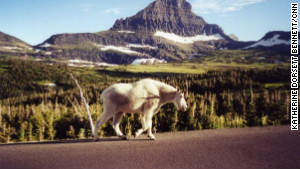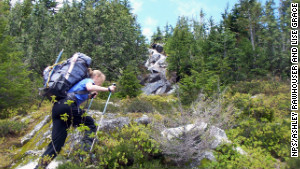To get off the grid and into the wild on an overnight backpacking trip. God knows I have been putting in the hours, so now its time for me to get off the grid, climb a few mountains and hug a few trees.
Sound weird?
Come on! Don't tell me you have never hugged a tree!
Backpackers are likely to
experience the wilderness much more intimately than other types of
travelers -- and reap the benefits of physical exercise and mental
refreshment at the same time.
A variety of studies show that even relatively brief experiences in nature can enhance feelings of energy and vitality.
Nature has a way of
magnifying little details you may have overlooked, and your safety and
overall enjoyment depend on your preparedness. So if you're not sure
where to begin your backpacking adventure, consider a guided trip.
Trip outfitters will
often supply you with all the gear you need, including food. And guided
getaways are not just for beginners.
Many guides will
customize trips to suit your specific needs and physical condition.
Guided trip costs can range from less than $200 per person to thousands
of dollars depending on the nature and length of your trip. Starting
locally is a great way to gauge your interest and skill level for future
expeditions.
Ready for some adventure? These five immense U.S. national parks are in my eyesight. I will pick one of them and get off the grid!
Grand Canyon National Park
The Grand Canyon
in Arizona offers some of the most challenging backpacking in the
United States due to its steep trails and fast-changing weather
conditions. If you opt to hike from the North Rim to the South Rim,
you'll experience an elevation differential of more than 10,000 feet
from start to finish, according to the National Park Service. The reward? Getting a unique perspective on the natural wonder and its geological rainbow from the base of the canyon.
A popular itinerary for first-time backpackers is to spend a few nights at either Bright Angel or Indian Garden Campgrounds. These sites can be accessed by the Bright Angel Trail, and you'll need a park service backcountry permit.
The National Park Service maintains a list of companies authorized to guide backpackers within the park.
Glacier National Park

Glacier National Park is home to more than 60 species of mammals including mountain goats.
Glacier National Park in
Montana ranks as one of the most popular backpacking parks, according
to the National Park Service. Its alpine lakes, steep mountains,
abundant wildlife and more than 700 miles of trails make this park a
backpacker's dream.
Belly River Trail
is a popular route. This 13.6 mile trail offers spectacular mountainous
scenery and passes by campgrounds at Elizabeth Lake and Helen Lake. The
trail drops 740 feet in the first few miles then levels out. Backcountry campers will need a permit.
Glacier Guides is the park-service approved outfit for guided and custom backpacking trips into the park's backcountry.
Yellowstone National Park
Yellowstone is
one of the most diverse national parks, with landscapes ranging from
forested mountain slopes to valleys bustling with wildlife to roaring
rivers.
Some 1,000 miles of
trails criss-cross the park, some offering easy trips over gentle
terrain, while others require technical skills and endurance.
The park service says
many of Yellowstone's trails are more than 7,000 feet above sea level
and most areas have snow until late May or early June. The park service
suggests avoiding high elevations early in the season because some of
these areas may be closed if conditions are considered unsafe for
visitors.
A list of outfitters permitted to guide backpackers within Yellowstone can be viewed on the park's official website.
Denali National Park and Preserve
Denali,
in Alaska's interior, encompasses more than 6 million acres of land and
is home to North America's tallest peak at 20,320 feet -- Mount
McKinley. Black bears and grizzly bears are among the stars for wildlife
spotters (just keep your distance).
This national park is
about the size of Vermont, yet only a handful of trails exist in this
vast, solitary area. Most of the trails are within three miles of the
park entrance, but if you're adventurous, you can explore the wild
terrain, which ranges from a low-elevation taiga forest to snow-covered
mountains. You'll need to get a backcountry permit in person before you set out.
Three park-authorized companies offer guided backpacking: Alaska Mountaineering School, Mountain Trip and Rigging for Rescue.

A backpacker makes her way through North Cascades National Park.
North Cascades National Park
Escape to this national
park in Washington state and surround yourself with mountains, glaciers
and streams. Grizzly bears are among the 75 mammal species that inhabit
the wilderness.
Backpacking is popular at North Cascades
and trips can range from an overnight on relatively level land to
multiday hikes over multiple mountain passes. Mountaineering treks for
varying skill levels are an option, too, but this is not a beginner's
venture.
Beaver Loop trail
is a moderate, forested route. The 34.2 mile journey offers a side trip
with views of Challenger glacier and peak and usually takes three to
four days.
The park service lists authorized guides for North Cascades backpacking on its site.
